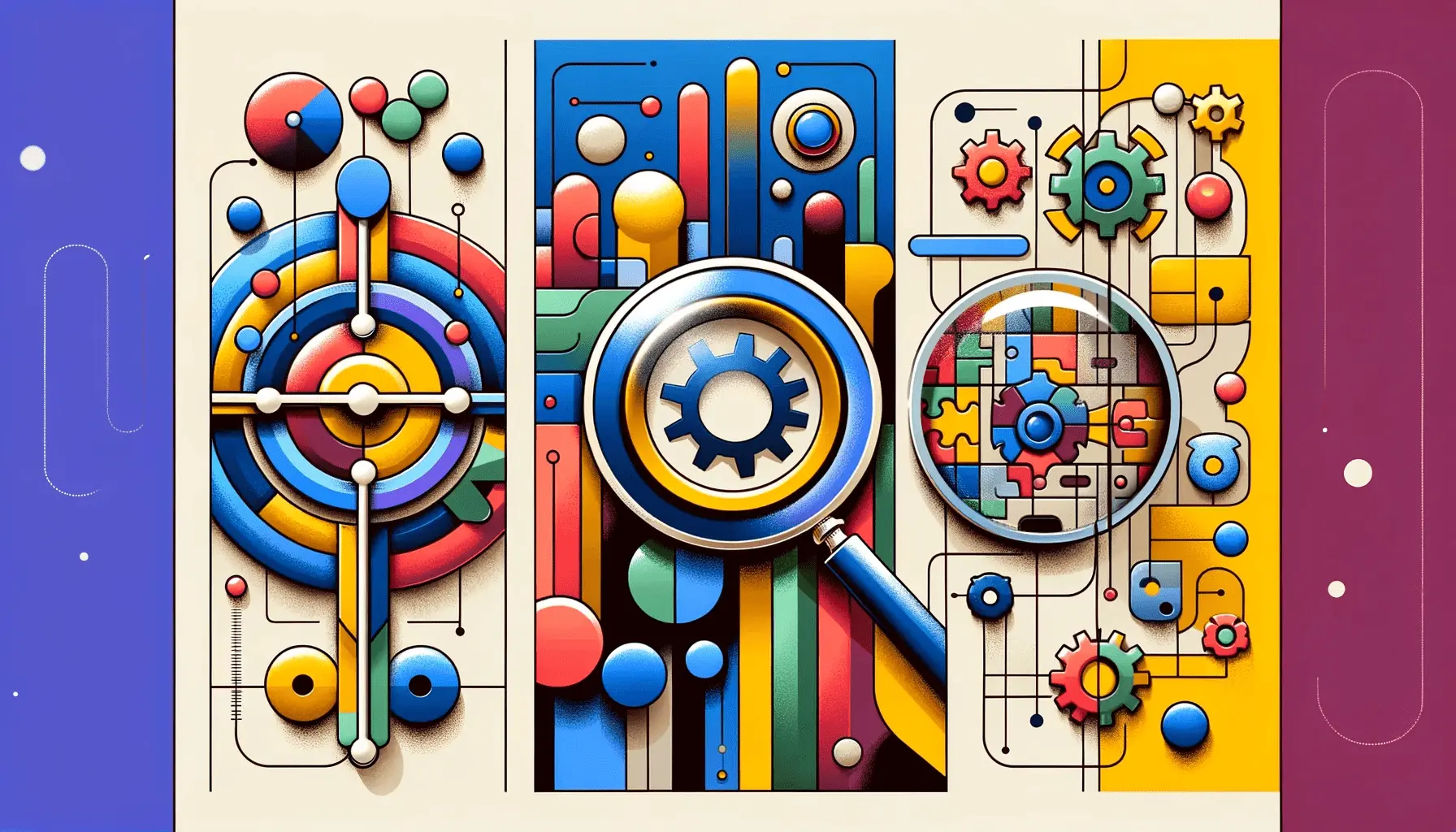In the ever-evolving landscape of digital marketing, the emergence of Google’s Bard has opened new avenues for brands to connect with their audience.
This innovative tool, powered by artificial intelligence, is not just a technological marvel; it’s a storyteller’s dream.
Google’s Bard, with its ability to understand and generate human-like text, is revolutionizing how brands craft their narratives, making storytelling more engaging, personalized, and impactful.
Brand storytelling is no longer confined to traditional methods.
The digital age demands innovation, and Google’s Bard is at the forefront, offering brands a unique tool to tell their stories.
By leveraging Bard’s capabilities, marketers can create content that resonates deeply with their audience, fostering a stronger connection and enhancing brand loyalty.
This tool’s introduction marks a significant shift in digital marketing strategies, where creativity and technology merge to create compelling brand stories.
- Understanding Google’s Bard
- Enhancing Brand Personality and Voice
- Optimizing for Search Engines and Social Media
- Streamlining Content Production and Distribution
- Integrating AI in Creative Strategy
- Challenges and Ethical Considerations
- Maximizing Audience Engagement Through Analytics
- Embracing the Future of Brand Storytelling with Google’s Bard
- FAQs on Google’s Bard in Brand Storytelling
Understanding Google’s Bard
Google’s Bard is an AI-driven platform designed to simulate human conversation through advanced natural language processing.
This technology allows Bard to generate text-based content with a level of creativity and coherence that mirrors human writing.
For brands, this means the ability to produce dynamic storytelling elements, from blog posts to social media content, with efficiency and a touch of human-like creativity.
Bard’s foundation on Google’s extensive data and algorithms ensures that the content is not only engaging but also relevant and informed.
The significance of Bard in brand storytelling lies in its capacity to process and generate information in a way that feels personal and authentic.
In an era where consumers value personalization, Bard’s technology enables brands to tailor their narratives to individual preferences and interests, making each story more impactful.
The tool’s ability to analyze vast amounts of data means it can also provide insights into consumer behavior, further refining storytelling strategies.
Revolutionizing Content Creation
One of the most immediate benefits of Google’s Bard for brands is its ability to revolutionize content creation.
With Bard, marketers can quickly generate ideas, draft content, and refine their messages, significantly reducing the time and resources typically required.
This efficiency does not come at the cost of quality.
Bard’s AI is capable of producing content that is not only fast and efficient but also creative and engaging, allowing brands to maintain a consistent and compelling online presence.
Beyond mere content generation, Bard’s AI technology offers the potential for interactive storytelling.
Brands can create dynamic narratives that adapt based on user interactions, providing a more immersive and engaging experience.
This level of interactivity can transform passive readers into active participants in the brand’s story, deepening their connection to the brand.
Google’s Bard is transforming brand storytelling by merging creativity with technology, enabling brands to create more personalized, engaging, and interactive narratives.
Enhancing Brand Personality and Voice
Every brand has a unique personality and voice, which are crucial for differentiating themselves in a crowded market.
Google’s Bard offers an unprecedented opportunity to enhance these aspects of brand storytelling.
By analyzing a brand’s existing content and guidelines, Bard can generate text that aligns with the brand’s voice, ensuring consistency across all platforms.
This consistency is key to building brand recognition and trust among consumers.
Moreover, Bard’s AI can adapt the brand’s voice for different contexts and audiences, making the brand’s messaging more versatile without losing its core identity.
This adaptability is particularly beneficial for brands targeting diverse demographics or operating in multiple markets.
By leveraging Bard, brands can ensure their messaging resonates with each segment of their audience, enhancing engagement and loyalty.
Personalization at Scale
- Targeted Storytelling: Bard’s AI analyzes consumer data to tailor stories that speak directly to the interests and needs of individual users. This level of personalization ensures that each consumer feels valued and understood, strengthening their connection to the brand.
- Dynamic Content Creation: With Bard, brands can dynamically adjust their content based on real-time feedback and trends. This ability allows for more relevant and timely storytelling, keeping the brand’s narrative fresh and engaging.
Building Deeper Emotional Connections
The power of storytelling lies in its ability to evoke emotions and build connections.
Google’s Bard enhances this aspect by enabling brands to craft stories that resonate on a deeper emotional level.
By analyzing vast amounts of data, Bard can identify the themes and narratives that are most likely to elicit an emotional response from the target audience.
This insight allows brands to create stories that are not only relevant but also deeply moving, fostering a stronger emotional bond between the brand and its consumers.
Furthermore, Bard’s ability to generate diverse and inclusive content ensures that every consumer can see themselves reflected in the brand’s stories.
This inclusivity is crucial for building a loyal and engaged community around the brand, as it shows that the brand values and respects all its consumers.
Incorporating Bard into brand storytelling strategies offers a unique opportunity to enhance brand personality, voice, and emotional connections, making stories more personal, relevant, and inclusive.
Optimizing for Search Engines and Social Media
In today’s digital landscape, visibility is as crucial as the story itself.
Google’s Bard plays a pivotal role in optimizing brand narratives for search engines and social media platforms.
By understanding the nuances of SEO and social media algorithms, Bard can help brands craft content that is not only engaging but also ranks higher in search engine results, increasing visibility and driving traffic to the brand’s digital channels.
Moreover, Bard’s ability to analyze trends and keywords ensures that the content remains relevant and timely, capturing the audience’s attention at the right moment.
This strategic alignment with search engines and social media trends is essential for brands looking to stand out in a highly competitive digital environment.
Enhancing User Engagement
- Interactive Storytelling: Bard enables brands to create interactive stories that encourage user participation. This interactivity boosts engagement, as users are more likely to interact with content that feels personal and responsive.
- Visual and Textual Harmony: By integrating Bard’s textual content with visual elements, brands can create a harmonious user experience that captivates the audience’s senses, further enhancing engagement.
Measuring and Refining Content Strategy
One of the key advantages of using Google’s Bard in brand storytelling is the ability to measure the effectiveness of content strategies in real-time.
Bard’s analytics capabilities allow brands to track engagement, reach, and other key metrics, providing valuable insights into what resonates with the audience.
This data-driven approach enables brands to refine their storytelling strategies, focusing on narratives that drive the most engagement and conversion.
Furthermore, Bard’s continuous learning algorithm means that it gets better over time, adjusting to changes in audience behavior and preferences.
This adaptability ensures that brands can maintain a dynamic and responsive content strategy that evolves with their audience.
Leveraging Bard for SEO and social media optimization not only enhances brand visibility but also ensures that stories reach and resonate with the intended audience, driving engagement and loyalty.
Streamlining Content Production and Distribution
The content production and distribution process can be time-consuming and resource-intensive for brands.
Google’s Bard significantly streamlines these processes by automating the generation of high-quality content.
This automation allows brands to maintain a consistent content output without compromising quality, ensuring that their narrative remains active and engaging across all platforms.
By reducing the time and resources required for content production, Bard enables brands to allocate their efforts towards strategic planning and creative development.
Additionally, Bard’s integration capabilities mean that content can be seamlessly distributed across various channels, from social media to email marketing campaigns.
This streamlined distribution ensures that the brand’s story reaches the audience wherever they are, enhancing the overall impact of the narrative.
Facilitating Collaborative Storytelling
- Team Contributions: Bard’s collaborative features enable multiple team members to contribute to the storytelling process, ensuring a diverse and multifaceted narrative. This collaboration enriches the brand’s story, reflecting a wide range of perspectives and ideas.
- Feedback and Iteration: With Bard, feedback can be incorporated in real-time, allowing for rapid iteration and refinement of the story. This agility ensures that the narrative remains dynamic and responsive to audience feedback and changing market conditions.
Adapting to Market Trends and Audience Preferences
Market trends and audience preferences are constantly evolving, posing a challenge for brands to stay relevant.
Google’s Bard, with its advanced analytics and learning algorithms, helps brands adapt their narratives to these changes.
By analyzing data on audience behavior and market trends, Bard can suggest adjustments to the storytelling strategy, ensuring that the brand remains aligned with its audience’s interests and expectations.
This adaptability is crucial for long-term brand success, as it enables brands to navigate the complexities of the digital landscape with agility and foresight.
By staying attuned to the shifting dynamics of the market and audience preferences, brands can ensure that their stories continue to resonate and inspire.
Google’s Bard not only streamlines content production and distribution but also fosters collaborative storytelling and adaptability to market trends, ensuring that brand narratives remain relevant and impactful.
Integrating AI in Creative Strategy
The integration of Google’s Bard into a brand’s creative strategy marks a significant shift towards data-driven creativity.
Bard’s AI capabilities allow brands to harness vast amounts of data to inform their storytelling, blending creativity with insights to craft narratives that are not only engaging but also strategically aligned with the brand’s objectives.
This integration ensures that every story told is not just a piece of content but a strategic asset that contributes to the brand’s overall vision and goals.
Moreover, Bard’s ability to generate creative content based on data insights allows brands to explore new narrative possibilities.
Brands can experiment with different storytelling formats, styles, and perspectives, pushing the boundaries of traditional narratives and engaging with their audience in innovative ways.
This exploration is key to keeping the brand’s narrative fresh and exciting, capturing the audience’s attention in a constantly evolving digital landscape.
Enhancing Creative Decision-Making
- Data-Informed Creativity: By providing insights into audience preferences and behaviors, Bard empowers brands to make creative decisions that are informed by data, ensuring that their narratives are aligned with what the audience wants to hear.
- Experimentation and Innovation: Bard’s AI-driven content generation opens up new avenues for experimentation and innovation in storytelling, encouraging brands to explore unconventional ideas and creative approaches.
Future of Brand Storytelling with AI
The future of brand storytelling is undoubtedly intertwined with AI.
As tools like Google’s Bard become more sophisticated, the possibilities for creative storytelling expand exponentially.
Brands will be able to create more personalized, interactive, and immersive narratives that engage the audience on a deeper level.
The future of storytelling lies in the ability to blend human creativity with AI’s analytical power, creating stories that are not only captivating but also deeply resonant with the audience’s values and aspirations.
Furthermore, as AI continues to evolve, we can expect to see more integrated and seamless experiences between brands and their audiences.
The line between storyteller and listener will blur, with audiences playing an active role in shaping the narratives.
This collaborative future of storytelling will not only enhance the audience’s engagement but also foster a stronger sense of community and belonging around the brand.
The integration of Google’s Bard into creative strategy enhances data-driven creativity, supports innovative storytelling, and paves the way for a future where AI and human creativity collaborate to tell compelling brand stories.
Challenges and Ethical Considerations
While the integration of Google’s Bard into brand storytelling offers numerous advantages, it also presents challenges and ethical considerations.
One of the primary concerns is the accuracy of the information generated by AI.
Despite its advanced algorithms, Bard can sometimes produce content that is misleading or factually incorrect.
Brands must therefore implement rigorous review processes to ensure the integrity of the content before it reaches the audience.
This safeguarding is crucial for maintaining the brand’s credibility and trust with its audience.
Another ethical consideration is the potential for AI to perpetuate biases.
Since AI systems like Bard learn from vast datasets that may contain biased information, there is a risk that these biases could be reflected in the content it generates.
Brands have a responsibility to monitor and correct any biased content, ensuring that their narratives are inclusive and representative of their diverse audience.
Privacy and Data Security
- Protecting User Data: As Bard leverages user data to personalize content, brands must prioritize privacy and data security. Ensuring that user data is handled ethically and in compliance with data protection regulations is essential for maintaining user trust.
- Transparency in AI Use: Brands should also be transparent about their use of AI in content creation. This transparency helps manage audience expectations and fosters an environment of trust and openness.
Navigating the Future of AI in Storytelling
The challenges and ethical considerations associated with using Google’s Bard in brand storytelling underscore the importance of a balanced approach.
As brands navigate the future of AI in storytelling, they must remain vigilant about the potential pitfalls while embracing the opportunities AI offers for creativity and engagement.
By addressing these challenges head-on and upholding ethical standards, brands can leverage Bard to tell stories that are not only compelling but also responsible and respectful of their audience’s values and rights.
Ultimately, the successful integration of AI like Bard into storytelling strategies will depend on brands’ ability to balance innovation with ethical considerations.
As technology continues to evolve, so too will the strategies brands use to connect with their audience.
The future of storytelling will be shaped by those who can harness the power of AI responsibly, creating narratives that resonate on a human level while navigating the complex ethical landscape of the digital age.
Despite the potential for innovation, brands must carefully consider the challenges and ethical implications of using AI in storytelling, ensuring accuracy, inclusivity, and respect for privacy.
Maximizing Audience Engagement Through Analytics
Utilizing Google’s Bard not only revolutionizes the way brands tell stories but also offers an unparalleled advantage in understanding and maximizing audience engagement.
Bard’s advanced analytics capabilities allow brands to gain deep insights into how their stories are received, which parts resonate most with the audience, and areas that may need refinement.
This data-driven approach to storytelling enables brands to continuously improve their narratives, ensuring they remain compelling and relevant to their audience.
By analyzing engagement metrics, brands can identify the types of stories that generate the most interest, the platforms where their narratives are most effective, and the demographics of their most engaged audience segments.
This information is invaluable for tailoring future stories to better meet audience preferences, ultimately leading to higher engagement rates and a stronger emotional connection with the brand.
Leveraging Bard for Competitive Advantage
- Strategic Content Planning: Insights from Bard’s analytics can inform strategic content planning, helping brands to allocate their resources more effectively and prioritize stories that are likely to have the greatest impact.
- Real-time Content Optimization: Bard’s ability to provide real-time feedback on audience engagement allows brands to quickly adjust their storytelling strategies, optimizing content for better performance as trends and audience preferences evolve.
Building a Data-Informed Storytelling Culture
Embracing Bard and its analytics capabilities encourages the development of a data-informed storytelling culture within brands.
This culture values not just creativity but also the insights that data can provide, blending art and science to craft narratives that truly resonate with the audience.
In this environment, every story told is an opportunity to learn, grow, and deepen the connection with the audience, driving brand loyalty and advocacy.
The integration of Bard into brand storytelling strategies represents a significant leap forward in how brands engage with their audience.
By leveraging Bard’s AI capabilities and analytics, brands can not only tell more effective and engaging stories but also build a more profound and lasting relationship with their audience.
As we look to the future, the role of AI in storytelling will only continue to grow, offering even more opportunities for brands to captivate and inspire their audience.
Analytics and insights from Google’s Bard offer brands a competitive edge in storytelling, enabling a data-informed approach that maximizes audience engagement and fosters a culture of continuous improvement.
Embracing the Future of Brand Storytelling with Google’s Bard
The advent of Google’s Bard in the realm of digital marketing and brand storytelling heralds a new era of creativity, engagement, and personalization.
As brands strive to connect with their audiences in more meaningful ways, Bard offers a suite of capabilities that revolutionize traditional storytelling methods.
By integrating this advanced AI tool into their storytelling strategies, brands can harness the power of data-driven creativity to craft narratives that resonate deeply with their audience, fostering stronger connections and driving brand loyalty.
The Strategic Edge of AI-Driven Storytelling
Google’s Bard equips brands with the ability to not only generate content that is engaging and relevant but also to personalize narratives at scale.
This level of personalization ensures that each member of the audience feels seen and understood, significantly enhancing the impact of brand stories.
Moreover, Bard’s analytics capabilities provide invaluable insights into audience preferences and behaviors, allowing brands to continuously refine their storytelling strategies for maximum engagement.
- Enhanced Creativity and Efficiency: Bard’s AI-driven content creation streamlines the production process, enabling brands to maintain a consistent and compelling narrative across all digital platforms.
- Deeper Emotional Connections: Through personalized and interactive storytelling, Bard helps brands build deeper emotional connections with their audience, transforming passive consumers into active brand advocates.
- Optimized Content for Maximum Reach: By leveraging Bard’s understanding of SEO and social media trends, brands can ensure their stories are seen by a wider audience, increasing visibility and engagement.
Navigating Challenges with Ethical Considerations
While the benefits of incorporating Google’s Bard into brand storytelling are clear, it is crucial for brands to navigate the associated challenges with a mindful approach to ethics and accuracy.
Ensuring the integrity of AI-generated content and addressing potential biases are essential steps in maintaining the trust and respect of the audience.
Moreover, prioritizing privacy and data security in personalized storytelling efforts is paramount for upholding ethical standards in the digital age.
Looking Ahead: The Evolution of Storytelling with AI
The integration of AI tools like Google’s Bard into brand storytelling is just the beginning.
As technology continues to advance, we can anticipate even more innovative ways for brands to engage with their audiences.
The future of storytelling lies in the seamless blend of human creativity and AI’s analytical prowess, offering endless possibilities for brands to tell their stories in ways that are not only captivating but also deeply resonant with the audience’s values and aspirations.
In conclusion, Google’s Bard represents a significant milestone in the evolution of brand storytelling.
By embracing this technology, brands can unlock new dimensions of creativity, personalization, and engagement, setting the stage for a future where stories are not just told but experienced.
As we move forward, the role of AI in storytelling will undoubtedly expand, offering exciting opportunities for brands to connect with their audience in meaningful and innovative ways.
FAQs on Google’s Bard in Brand Storytelling
Explore common inquiries about leveraging Google’s Bard for enhancing your brand’s storytelling efforts.
Google’s Bard is an AI-driven chatbot designed to simulate human-like conversations and generate creative content, enhancing digital storytelling.
Bard can generate personalized, engaging content that resonates with audiences, offering a new dimension to brand narratives.
Yes, Bard is capable of crafting creative and relevant content for various social media platforms, optimizing engagement.
Bard can help optimize content with SEO-friendly practices, improving visibility and search engine rankings.
By analyzing data and user interactions, Bard tailors content to individual preferences, enhancing personalization.
Yes, Bard provides insights and suggestions based on trends and analytics, aiding in strategic content planning.
While Bard generates creative content, human oversight is recommended to ensure accuracy and align with brand values.
Brands should consider accuracy, bias, and data privacy when using Bard to create and distribute content.













